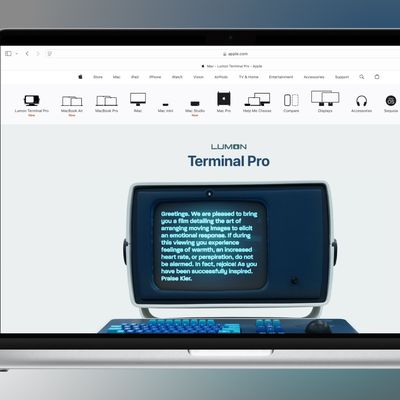Apple debuted its Touch ID fingerprint sensor in September of 2013 with the iPhone 5s, making it the first major smartphone to include fingerprint recognition technology. Samsung followed with its own version of a fingerprint scanner in the Galaxy S5, which is slated to be released on April 11.
A new YouTube video from Tanner Marsh compares Touch ID on iPhone 5s with the fingerprint scanner of the upcoming Galaxy S5, walking through the process of setting up fingerprint recognition on both devices and comparing and contrasting some of the available functionality.
The two fingerprint scanners are quite different, with Apple's Touch ID utilizing a round home button that captures a motionless fingerprint while Samsung's sensor is activated using a swiping motion that scans the finger from base to tip using a rectangular home button.
iPhone 5s users may be familiar with the setup process of Touch ID, which includes placing each finger on the home button multiple times in order to register a fingerprint from multiple angles. Samsung's setup is a bit different, involving multiple swipes downward on the screen over the home button.
Early reports suggested Samsung's fingerprint sensor was somewhat inaccurate, and the video depicts some of the same problems with fingerprint recognition. Marsh notes that he has to swipe directly over the center of the home button for a fingerprint to register and describes how the sensor on the S5 is hard to use with a single hand.
It seems like it's sort of hit or miss unless you swipe directly over the center of the button, covering most of it with your finger. Moreover because you have to swipe starting from the bottom of the touchscreen it makes the process nearly impossible with one hand.
As for the iPhone 5s, because the device essentially captures multiple scans of your finger in various positions you can literally unlock it from any orientation including upside down, left, right, or diagonally. It doesn't matter. It will almost always recognize your finger.
While Samsung's fingerprint sensor appears to have some issues, Apple's Touch ID faced its own problems early on, including "fade," or the increasingly erratic performance of the fingerprint sensor over time. iOS 7.1, released in March, solved the issue, bringing much-needed improvements to Touch ID's fingerprint recognition capabilities.
Apple also faced significant scrutiny over both hacking and privacy concerns after the launch of the iPhone 5s, leading it to publish multiple documents detailing how the feature works, assuring users that only mathematical representations of fingerprints are stored in the A7 processor’s Secure Enclave, which is walled off from the rest of iOS.
Samsung may face some of the same scrutiny following the April 11 release of the Galaxy S5, especially as the company has plans to allow developers access to the feature.
Samsung's S5 will also be compatible with PayPal's mobile payment app, allowing users to authorize PayPal payments with a fingerprint, a feature that could also cause concern with some users. Apple has plans to enter the payment arena with its Touch ID fingerprint scanner, but has yet to do so.






















